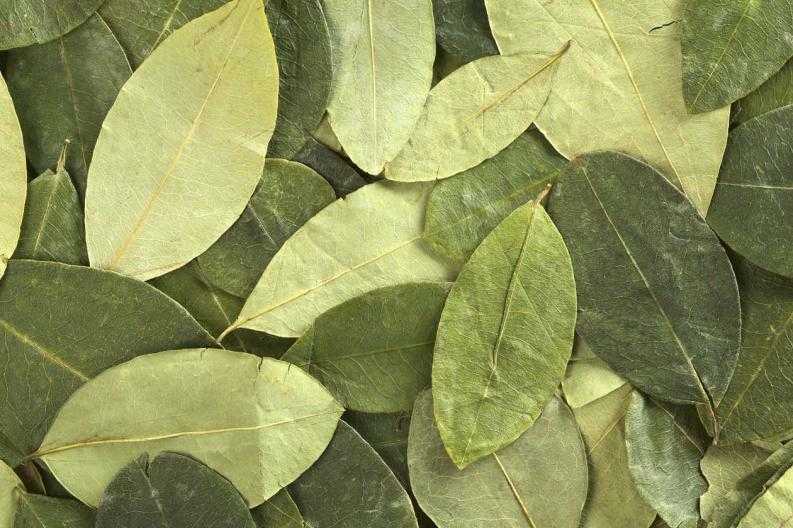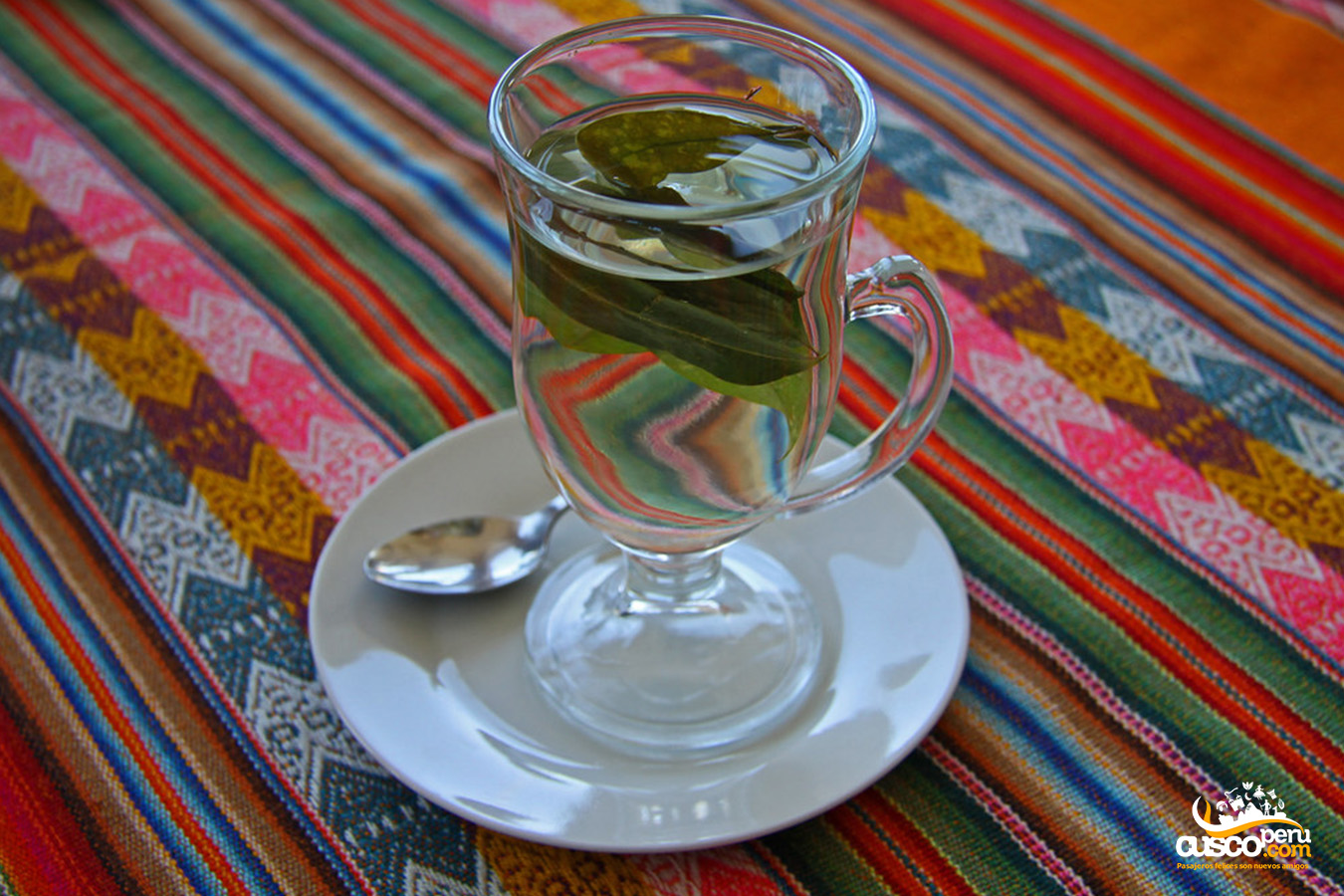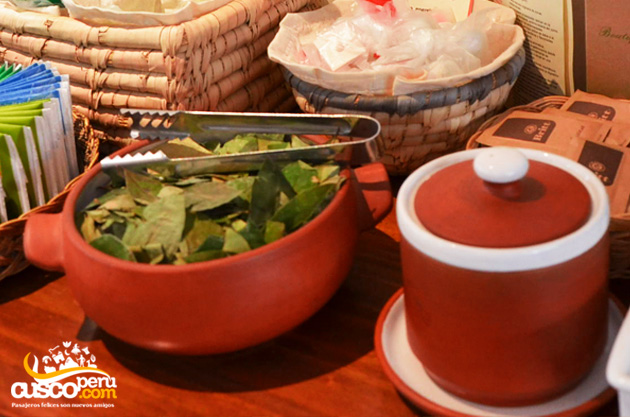
The coca leaf was a very important part of Inca culture, however, not all inhabitants could consume it. This privilege was reserved for the Inca royalty, who also controlled its production and consumption.
Currently, this plant is marketed in the city of Cusco and other cities with Andean descent. It is available as coca leaves alone, or in infusions, extracts, candies, chocolates, and even alcoholic beverages.
The scientific name of the coca leaf is Erythroxylum Coca, a medium-sized bush that typically grows in climates and altitudes ranging between 800 and 2,500 meters above sea level.
The coca leaf bush requires special care and attention, it is strong enough to produce up to four harvests per year, yielding up to 1200 kilograms per hectare. The average lifespan of the coca leaf bush is estimated at 60 years.
The natural habitat of this plant is the eastern Andes of Peru and Bolivia, but it can also be found in Colombia, Brazil, and Ecuador.

The coca leaf naturally contains the following alkaloids:
Besides containing all the alkaloids mentioned, the coca leaf is also a very complete food, containing Vitamins B1, B2, C, iron, calcium, and proteins.
In the Andean world, coca leaves had a wide variety of uses and were also attributed a series of almost magical qualities.
The consumption of coca leaves by farmers has been a custom dating back to the times of the Incas and is still evident today. It provides a burst of energy and vitality, which is one of the main reasons for its consumption.
Typically, those who chew coca leaves in this way can work long hours without feeling tired or cold, due to the anesthetic effect of their alkaloids.
Chewing coca leaves was also recommended as a way to heal toothaches, stomach pains, and other physical discomforts.
The coca leaf was used by the Inca amautas or wise men to try to predict the future by reading the leaves for signs or omens of what was to come. It is believed that by throwing coca leaves into the air, letting them fall and then carefully observing the way the leaves arranged themselves on the ground can help predict events that are yet to happen, discover where stolen objects are located and who stole them, among other uses.
Similarly, Inca populations paid tribute to Mother Earth or Pachamama at the start of the rainy season or fertile season with a ritual known as "payment to the earth" in which a hole is dug in the ground and various products and offerings are placed in it, including the sacred coca leaves to ensure a good harvest and a good year.
In the Andean world, there was a social gathering known as Hallpay where community members congregated around a table full of coca leaves. This meeting was intended to consecrate the divine union between man and the spiritual beings of the Andes as well as to strengthen their identity, customs, and reinforce social bonds.
The exchange of coca leaves for other products such as meat, potatoes, beans, vegetables was also a very common practice during the time of the Incas, meaning that coca leaves also played an important part in the Inca economy.
The Incas had a postal system across their territory, and the couriers, known as 'Chaskis', were usually young men of athletic build who traveled the empire on foot. This group made extensive use of coca leaves, as their consumption enabled them to perform their duties and cover great distances without feeling fatigued.
As can be seen, the Incas gave very diverse uses to the coca leaf and it was a fundamental part of their social structure, economy, and spirituality, hence they considered it a sacred plant.

The coca leaf is a plant that contains various properties with pharmacological effects. It acts as a mild stimulant to combat ailments such as pain, thirst, hunger, and altitude sickness.
This plant is native to the Amazonian Andes, where it is used in infusions. It holds religious significance, having been used for ceremonies and rituals since the time of the Incas.
The Incas used the coca leaf in religious rituals and as an offering to the gods. Additionally, its consumption was restricted to the Inca nobility because it was considered sacred.
The coca leaf offers numerous benefits as it contains a wide variety of vitamins, in addition to alkaloids, each with its unique properties. However, one of its main qualities is its ability to energize the consumer, enabling them to perform activities without feeling tired.
Using coca leaf in infusions for altitude sickness is very effective, as this plant provides an energy boost, helping the body to adapt to high altitudes. However, there is no scientific evidence to support this remedy, making it an ancient tradition.
Preparing coca tea is simple: just place about 6 to 7 leaves in a cup with boiling water and let it steep. It is important to drink it while it is still hot to maximize the effect.
The coca leaf was considered a mystical plant that only the Inca could consume; its main uses were for religious ceremonies and forecasting the future. This plant was also part of the Inca economy, as it was used as barter to exchange products with other peoples.
While the coca leaf is primarily grown in Peru, it is also possible to find it in countries like Bolivia, Ecuador, and Colombia.


Happy passengers